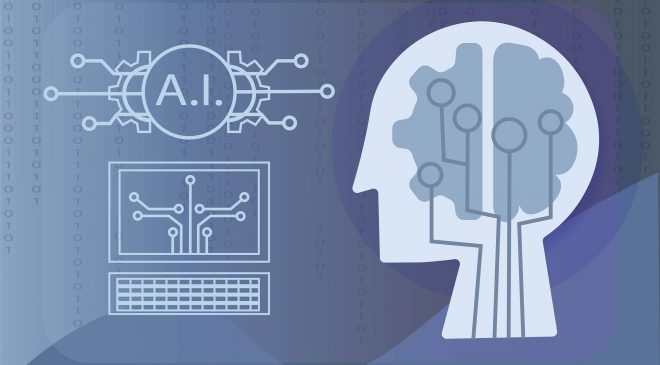
Exploring how artificial intelligence can be used to interpret and triage images.
Aboriginal and Torres Strait Island children are three times more likely to suffer from otitis media (middle ear infections) and twice as likely to have long-term hearing problems than non-Indigenous children in Australia. If left unchecked, ear disease can have devastating impacts throughout a child’s life.
But limited access to Ear, Nose and Throat (E.N.T.) specialists is a real challenge for communities – especially for Aboriginal and Torres Strait Islander children in rural and remote areas. The prevalence of chronic ear disease in such children is nearly ten times greater than the level which the World Health Organisation (WHO) considers a massive public health problem, requiring urgent attention.
When it comes to chronic ear conditions the disparity is even starker for Aboriginal and Torres Strait Islander children in rural and remote areas. The prevalence of chronic ear disease in such children is nearly ten times greater than the level which the World Health Organisation (WHO) considers a massive public health problem, requiring urgent attention.
Being unable to hear properly can drastically affect a child’s ability to develop speech and language skills, learn and interact with family and friends. It can contribute to behavioural problems and limit future employment opportunities, leading to lifelong challenges.
That’s why checking rural and remote Aboriginal and Torres Strait Islander children’s ear health and hearing is so important. During routine health check-ups a health worker, nurse or doctor will examine a child’s ears using an otoscope (ear camera) and if there appears to be an issue will capture an image that can be further analysed.
But Australia faces a shortage of Ear, Nose and Throat specialists which can lead to delays in diagnosis and treatment, particularly if the child lives outside a metropolitan area.
Now a landmark project, called DrumBeat.ai (www.drumbeat.ai), is exploring how artificial intelligence can be used to interpret and triage the images – allowing at risk children to be quickly identified regardless of where they live.
Dr Al-Rahim Habib is an Ear, Nose and Throat Surgery Unaccredited Registrar and a PhD candidate at the University of Sydney, leading the DrumBeat.ai project, supervised by Associate Professor Narinder Singh, Head of ENT at Westmead Hospital and a clinical academic at the University of Sydney. The aim of the DrumBeat.ai project is to empower front line health workers who might not have the expertise or experience at recognising ear disease or determining when urgent referral needs to be expedited – but can now get support via the digital platform.
To address the issue, the DrumBeat.ai team has been working with the Azure FastTrack team to develop a Microsoft Azure based solution that uses Azure Custom Vision and a machine learning model, trained using 20,000 existing otoscopic images, which can then analyse new images on the fly.
Analysing otoscopic images is notoriously difficult; early results from the project are highly encouraging and show that the DrumBeat.ai algorithm can differentiate normal from abnormal eardrums with an accuracy comparable to ear disease experts.
Associate Professor Narinder Singh, chief investigator on Drumbeat.ai says; “Having grown up on my family’s farm in Griffith, country NSW, I have first-hand experience of the difficulty in accessing timely healthcare in the bush. Any program that accelerates the speed at which at-risk children can be treated can have a huge impact for patients, care providers and the community.
Because the DrumBeat.ai analysis can be done in the cloud, there may be no delays waiting for a specialist to become available in a particular location, meaning children most at risk can be triaged to receive priority care.
This is particularly important for Aboriginal and Torres Strait Islander children living in r ural and remote parts of Australia where access to healthcare specialists can be especially challenging – never more so than during a global pandemic when border closures and snap lockdowns can restrict access to health services.
Even before the pandemic, taking a child with a hearing problem to see a specialist who may be located hundreds of kilometres away was a major challenge for remote communities. DrumBeat.ai brings the expert to the patient.
While developed in Australia, Dr Habib says similar problems exist overseas especially in regions such as India, sub-Saharan Africa and among First Nations people in the US and Canada.
DrumBeat.ai has benefitted from the world class collection of images that has been made available to train and finesse the algorithm. According to Dr Hemi Patel, a Northern Territory Ear Nose and Throat Surgeon who has been instrumental in establishing the image database; “Data is the key to any diagnosis. DrumBeat.ai has used an existing and world-class collection of analysed images to refine and train its model to be able to identify abnormal eardrum images with a high degree of accuracy, and to then triage patients for treatment. As this work proceeds our knowledge and data collection will expand and that, in turn, will allow further refinement of the model, leading to even better outcomes over time.”
Dr Nic Woods, health industry executive at Microsoft Australia and New Zealand, says DrumBeat.ai is an example of how AI infused digital platforms and telemedicine can accelerate diagnosis and opportunities for treatment.
“Microsoft is delighted to support Dr Habib and the DrumBeat.ai team in this important work with access to our Azure Fast Track engineering experts and an AI for Good grant.
“The pandemic has accelerated digital health initiatives across the world and demonstrated the power of telemedicine. DrumBeat.ai takes this to the next level, infusing AI to interpret images and ensure that those in need receive the medical attention they need to ensure long and healthy lives.” Because the DrumBeat.ai analysis can be done in the cloud, there may be no delays waiting for a specialist to become available in a particular location, meaning children most at risk can be triaged to receive priority care.




